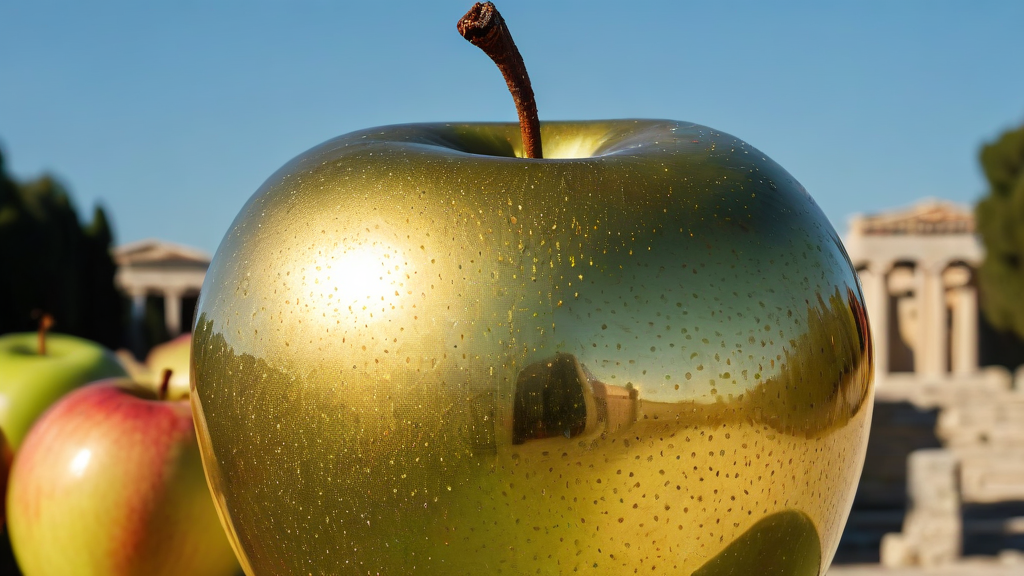
Throughout history and across diverse cultures, the apple has held multifaceted meanings, from symbols of love and beauty to representations of temptation and sin.
Love, Discord, and Desire: The Role of the Apple in Greek Mythology
In ancient Greece, the apple was deeply intertwined with mythology and religious beliefs, often associated with prominent deities and significant narratives. One such tale involves the wedding of Hera, where the earth-goddess Gaia presented the first apple tree as a gift to Hera, symbolizing fertility, prosperity, and new beginnings. Guarded by the Hesperides, these golden apples held mystical allure and were revered as sacred treasures.
Another renowned myth is the Judgment of Paris, where the golden apple, inscribed with the phrase “For the most beautiful one,” became the catalyst for discord among the goddesses Hera, Athena, and Aphrodite. Paris’s decision to award the apple to Aphrodite ultimately led to the legendary Trojan War, highlighting the apple’s role as a harbinger of chaos and conflict.
In Greek culture, the apple was particularly sacred to Aphrodite, the goddess of love and beauty. To throw or catch an apple was to symbolize declarations or acceptance of love, reflecting its association with romantic pursuits and desires. The story of Atalanta and Hippomenes further emphasizes this symbolism, as Hippomenes used golden apples from Aphrodite to win the race and Atalanta’s hand in marriage, showcasing the apple’s power in matters of love and courtship.
Sacred and Profane: The Apple in Christian Art and Symbolism

The apple’s significance extended into Christian art and symbolism, notably in the story of Adam and Eve. Though not explicitly mentioned in the Bible, popular tradition holds that the forbidden fruit in the Garden of Eden was an apple. This association led to the apple becoming a symbol of temptation, sin, and the fall of humanity, reinforcing its dual nature as a bearer of both knowledge and moral transgression.
In Renaissance art, the apple continued to be depicted as a symbol of temptation and human frailty, often linked to the biblical narrative of Adam and Eve. Paintings portraying the scene of Adam and Eve’s expulsion from paradise frequently feature the apple as a central motif, emphasizing its role in the disruption of divine harmony and the introduction of sin into the world.
Despite its complex symbolism, the apple also carries positive connotations, as evidenced by the proverb “An apple a day keeps the doctor away.” This saying, originating from 19th-century Wales, highlights the perceived health benefits of consuming apples regularly, underscoring the fruit’s association with vitality, well-being, and preventive care.
In conclusion, the apple’s rich tapestry of meanings encompasses themes of love, temptation, fertility, and mortality, reflecting humanity’s enduring fascination with this versatile fruit throughout the ages. From ancient mythologies to modern-day proverbs, the apple continues to captivate our imagination and resonate with diverse cultural narratives, serving as a potent symbol of both virtue and vice.



